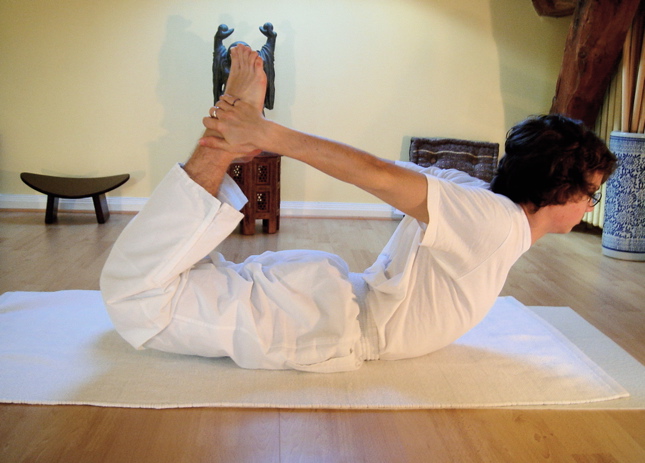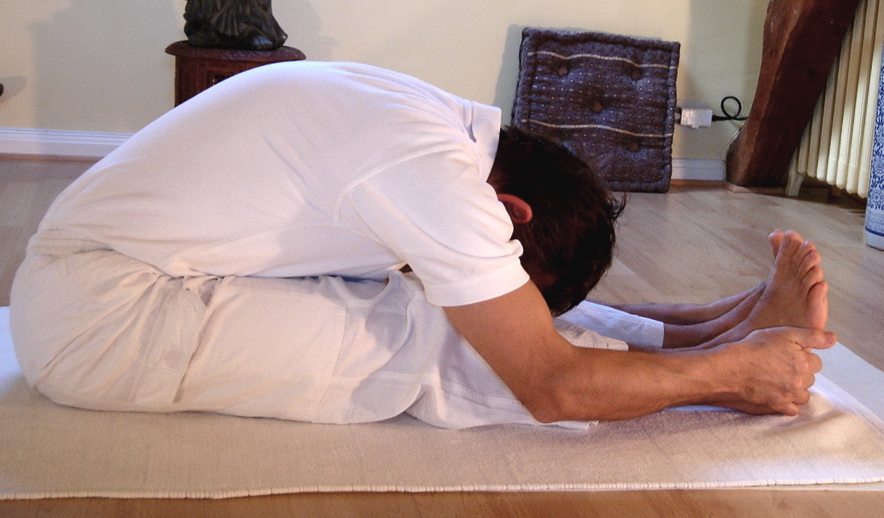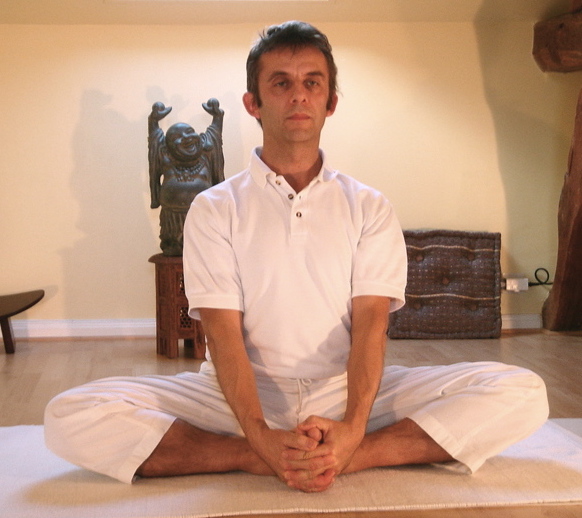Dhanurasana
Posture
When this Asana is performed, it represents the appearance of a bow (Dhanus). The stretched arms and forelegs form the string of the bow. It bends the spine backwards. It supplements Bhujangasana. We can say it is a combination of Bhujangasana and Salabhasana with the addition of catching the ankles with the hands. Bhujangasana, Salabhasana and Dhanurasana form a valuable combination. They always go together. They form one set of Asanas. This combination acts as a counter-pose to Halasana and Paschimottanasana, which bend the spine forwards.
Procedure
- Lie on your abdomen, feet together, forehead on the floor.
- Bend your legs toward the hips and hold the feet at the ankles with your hands.
- Breathing in, raise the head, chest and knees up.
- Focus on widening the shoulders, bringing the knees together and lifting them higher.
- Straighten the elbows by pushing the hands away with the feet and lift the chin up.
- Hold and continue breathing in and out.
- Breathing out, gently come down and press feet down onto hips, press the thighs into the floorto stretch the quadriceps.Release and relax.
Benefits
- This is useful in chronic constipation, dyspepsia and sluggishness of liver.
- It removes hunchback, rheumatism of legs, knee-joints and hands.
- It reduces the fat, energises digestion, increases peristalsis, invigorates the appetite and relieves congestion of blood in the abdominal viscera and tones them also.
- Dhanurasana is a blessing for people who suffer from gastro-intestinal diseases.
- It keeps the spine elastic. It prevents premature ossification of bones.
- He who does Halasana, Mayurasana and Dhanurasana can never become lazy. He is full of energy, vigour and vitality.











